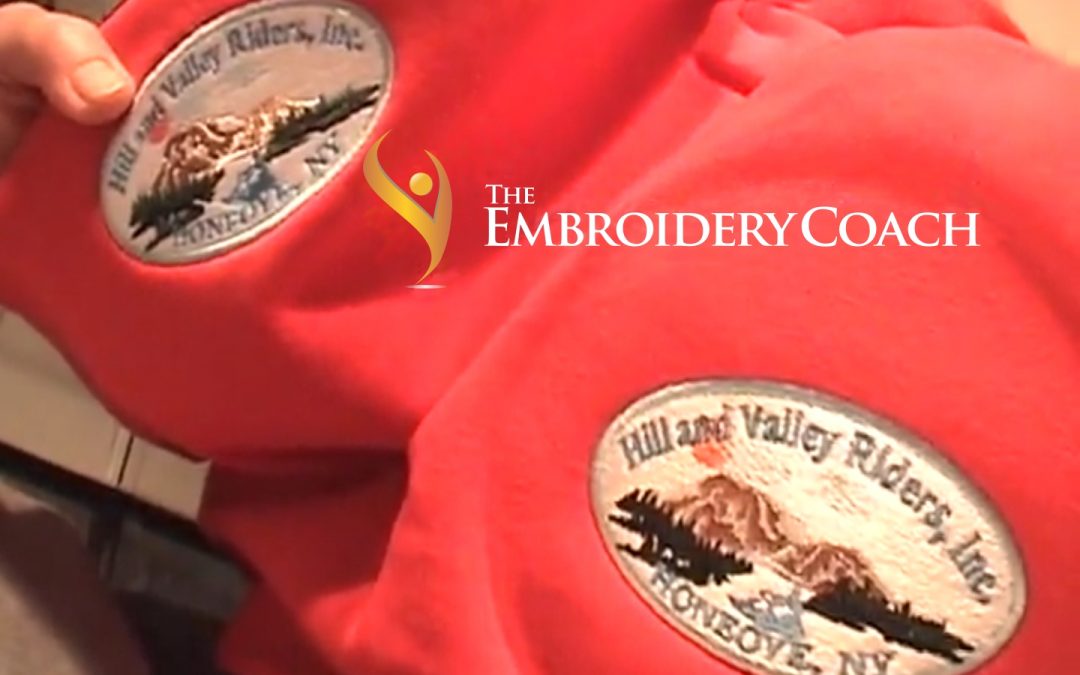Do you ever make mistakes when you are embroidering your garments? Have you been faced with an item that a customer brought in and it was not replaceable? Unfortunately, everyone makes a mistake now and then, but you need to know how to save those expensive garments when mistakes do occur! Sometimes you have garments that cannot be replaced! It is very important to have the skills to be able to fix these mistakes just in case you have items that customers have brought in to you and you do not have any way of replacing these items!
If it is an item that can be replaced, you need to weigh in the cost of replacing the item, your time spent on repairing it and of course the time that it takes to wait for the item to be shipped to you. Would it be more cost-effective to purchase a new item instead of going through the process to fix it?
Sometimes it makes no sense to spend the time to do it. This is something that you need to determine. You need to keep track of how long it takes you to do a repair or fix a mistake. You must know what your actual cost is for each type of mistake.
I have a 10-Step process to show you how to match up a design that has been taken out of the hoop before it was finished. This is a very common mistake especially if you are running a multi-head machine and you ran out of bobbin thread but the machine did not stop. In your haste to unhoop your items, you discover after it is done that it had not finished.
The mistake that I am going to show you is one that I hit the hoop with my arm and I just pulled the garment right out of the hoop. Now it needs to be rehooped and matched up perfectly so that the customer will not ever know that this happened. This is a very simple method that I learned many years ago and it works beautifully!
Step 1- Print out a copy of your worksheet from your design software. Make sure that you print out crosshairs or lines on your worksheet to make it easy to match it up in your hoop.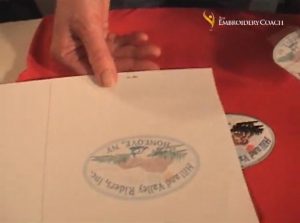
Step 2 – Cut out the design from the worksheet all around the edge of the design so that it matches the same size as 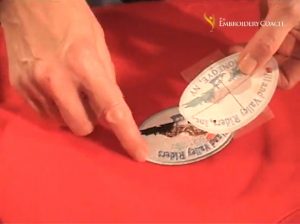 your finished design. You now have a paper pattern of your design. Look at it closely to get some good defining lines so that you can line it up perfectly.
your finished design. You now have a paper pattern of your design. Look at it closely to get some good defining lines so that you can line it up perfectly.
Step 3 –Cut out the first letter of this word and the last letter that was finished so that I can lay the paper but out 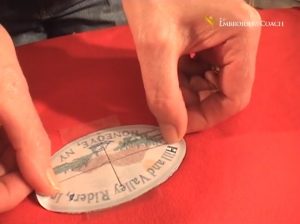
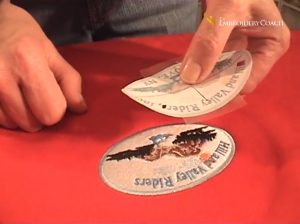 pattern down over top of the design on the shirt and line it up perfectly.
pattern down over top of the design on the shirt and line it up perfectly.
Place a piece of tape down to hold it in place.
Lift the edges of the paper pattern up it to make sure that the letters are in the exact same location.
Step 4- Place the bottom part of your hoop underneath your garment and position it to be in the center of your 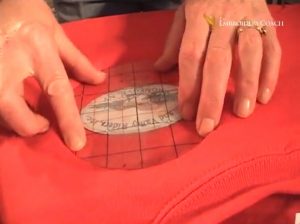 design. Do not forget to place new backing on your hoop. Taping the backing around the hoop will help to hold it in place if you are not using a hooping device.
design. Do not forget to place new backing on your hoop. Taping the backing around the hoop will help to hold it in place if you are not using a hooping device.
I have a template with grids on it that I cut out from an extra one of my design placement templates. I lay it down on the horizontal and vertical lines of my design and line it up. With my grid, I can line up my design perfectly. If you do not have a grid that you can use inside of your hoop, you can mark vertical and horizontal lines from the edge of your paper pattern to the outer edges of where the design will line up with your vertical and horizontal lines in your hoop. I use a sharp edge of a piece of soap for marking my garments. Hotel soaps are great for this.
Step 5- Place the top part of your hooping frame on, line it up and press it down with the center lines of the grid 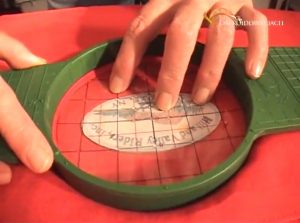 matching the center lines on the hoop both vertically and horizontally. If you are using marks that you made on your garment, they must line up perfectly in order for this to work, but it is not hard to do.
matching the center lines on the hoop both vertically and horizontally. If you are using marks that you made on your garment, they must line up perfectly in order for this to work, but it is not hard to do.
Step 6- Remove the template. The start/stop position of your paper design will be at the correct location in the center 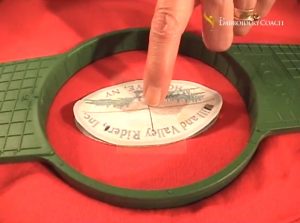 of the hoop.
of the hoop.
Step 7- In your software, you will need to mark the start/stop position so that it stays in the center of your design
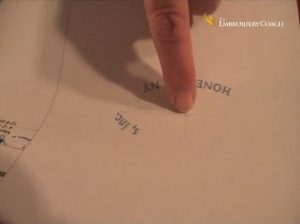 Delete all the parts of the original design that has been embroidered and is correct. Make sure to leave all of the part of the design that needs to be completed. This is now your new design.
Delete all the parts of the original design that has been embroidered and is correct. Make sure to leave all of the part of the design that needs to be completed. This is now your new design.
Save it with a new name so that you do not override your original design. Make sure that the new design is going to start in the same location as the original design.
Step 8- Place the garment into the machine and lined it up both vertically and horizontally. Remove the thread from 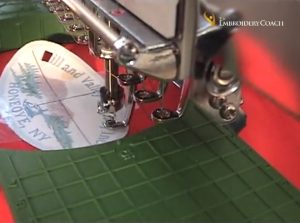 the needle to start with because you want to make sure everything is perfect and that it lines up with the last letter that finished.
the needle to start with because you want to make sure everything is perfect and that it lines up with the last letter that finished.
You have to hold the thread tight if you do not have a button to turn off the head because you don’t want it to register a thread break. Start the machine at a very slow speed or walk it holding the start button. This will help you make sure it’s lined up correctly.
Step 9- Stop, rethread the needle and remove the paper template and start the machine.

Step 10 – After the design is finished, you can pull it out of the hoop to see the finished product. If you follow this
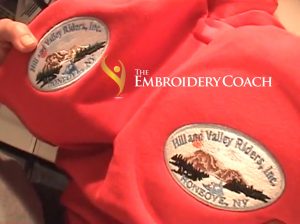 method, everything matches and no one will ever know that you had made the mistake in the first place.
method, everything matches and no one will ever know that you had made the mistake in the first place.
I use this same method to repair many types of mistakes, such as when you must remove stitches and replace them. It works great for many different types of situations. It has saved me many times and keeps my customers happy! They never know a mistake was made in the first place!
For information on how to build a successful embroidery business, visit Embroidery Business Academy

